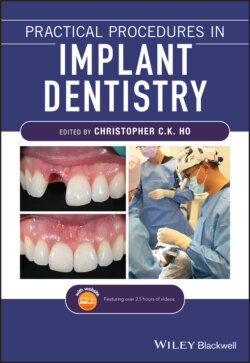Читать книгу Practical Procedures in Implant Dentistry - Группа авторов - Страница 29
3.1 Principles 3.1.1 Diagnostic Imaging and Templates
ОглавлениеProsthodontically driven treatment planning is the objective of implant therapy, and imaging is an essential component of diagnosis and treatment planning. The use of radiographic imaging and templates (guides/stents) allow correct three‐dimensional positioning of implants as well as avoiding any critical anatomical zones which may lead to neurovascular injury or damage to other structures.
Diagnostic imaging provides information about:
The quantity of bone
The quality of bone
Relationships to critical anatomical structures such as the inferior alveolar nerve, nasopalatine canal, mental foramen, maxillary sinus, and other teeth
The presence of disease and pathology.
Radiographic imaging is used in pre‐surgical planning to determine the length and width of the proposed dental implant, and the position within the alveolus. Modern implant dentistry requires accuracy of implant positioning to attain natural aesthetics with correct emergence and proper contours of the final restorations. The use of imaging and surgical guides can facilitate proper 3D placement. Poor implant placement can lead to soft tissue deficiencies with loss of papilla, recession, or damage to other anatomical structures.
Historically, clinicians were limited to using conventional two‐dimensional imaging for dental implant treatment planning. The main drawbacks of 2D imaging are the lack of cross‐sectional information and precise location of anatomical structures [1]. These 2D imaging techniques include the following:
Intra‐oral periapical radiographs: Using a parallel technique, this image provides high‐resolution information and any potential associated pathology and disease in the local region; however, it is limited in the physical size of the film and being a single plane.
Occlusal radiographs: These provide an overall view of the patient's bony anatomy, but they provide limited information due to superimposition of structures and magnification.
Lateral cephalometric radiographs: These provide the mid‐sagittal jaw width as well as the maxillo‐mandibular jaw relationship.
Panoramic radiographs: These provide an overview of vital structures and quantity of bone. However, magnification and distortion are a major limitation, and the panoramic view provides no cross‐sectional information. It is still widely used during the diagnostic phase as an initial screening record.
